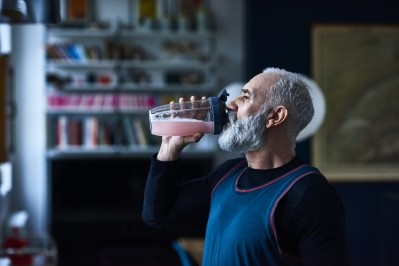Home-cooking wins but alcohol loses out as inflation-hit consumers rethink their spending choices

Consumers’ post-pandemic hopes have been drastically impacted by inflation, reversing optimism they once had in their personal and professional lives. Market researcher EY has launched its latest Future Consumer Index which tracks changing consumer sentiment and behaviours across 18,000 consumers worldwide conducted in February 2022 to identify emerging trends.
Consumers are changing their consumption habits, buying fewer non-essentials and saving more for the future due to rising costs across the board, it said. With regard food and grocery products industries, 52% of consumers said rising costs are affecting their ability to purchase goods as a result of economic uncertainty, 57% said they are willing to accept less choice in grocery if it brings prices down.
Consumers plan to trade down to cheaper alternatives and purchase fewer non-essentials, with the biggest cutbacks being on items such as alcohol, the research noted. Some 60% said they have either stopped purchasing alcohol or buying cheaper alternatives due to price increases.
Consumers are replacing dining out with at-home experiences, including increased takeout, delivery and meal kits, while 42% of consumers reported they plan to cook more, and the same percentage will eat more fresh food.
“Despite an economic uplift in many countries since the pandemic, consumers are not optimistic about their future due to rising inflation, fundamental changes in their work and personal lives, and a growing unease around current global geopolitical issues,” said Kristina Rogers, EY Global Consumer Leader.
“With their spending power eroding and uncertainties looming, consumers are having to rethink their spending choices, not only around ‘nice to have’ purchases, but also essential day-to-day goods.”
While, inevitably, this impacts lower-income earners the most (62%), the survey showed that middle-income earners (48%) and high-income earners (42%) are also being squeezed. Nearly 45% of respondents from developed markets (UK 42%, France 40%) said affordability is affecting their choices.
Experiences rather than ‘things’ are driving spend
Consumers are looking for experiences more than ever before, as they make up for lost time and look for escapism from the pressures of the post-COVID-19 world, the survey showed, with 45% saying they plan to live more in the moment.
Out of the five key broad spending priorities – planet first, affordability first, experience first, health first and society first – experience has seen the biggest increase, doubling in priority since 2020 and is now third biggest priority when consumers decide on where to spend, while it was the smallest at the beginning the pandemic.
Some 42% of all respondents are planning on spending more money on experiences in the next year. However, 39% are less inclined to be involved in experiences outside of their home, so the experience must come to them. Customers who are venturing out are demanding more from physical stores, with more than a third (36%) planning to only visit stores that offer a great experience.
“Customers are becoming harder to reach and the power is shifting from the brand to the consumer,” said Rogers. “Consumers originally turned from buying things to spending on experiences out of necessity, but now they see it as an active choice. The types of experiences that will appeal most to consumers are easy to access and require minimal time investment. Companies must look seriously at how they can bring more engaging and immersive experiences to the customer, both digitally and in physical stores, as customer demands shift from ‘having’ to ‘doing’, whether it’s through personalized, in-store consultations or personalized branded skins in the metaverse.”
Consumers remains guided by sustainability and values
When it comes to buying decisions, most respondents, for the second quarter in a row, are placing the planet first (26%), ahead of affordability (24%) and experience (20%), EY said.
Consumers are choosing to make more sustainable purchases, doing what they can to preserve their environment, with 56% saying they will pay more attention to the environmental impact of their purchases and 52% committing to pay more attention to the social impact. Two fifths (42%) say they will only buy from brands that align with their own values – a view held by the same percentage of the Generation Z population and 48% of Millennials.
“People have used the last two years to fundamentally rethink how they live and assess their relationship with consumerism and the values that drive their purchases,” Rogers concluded.
“With less money to spend and growing economic and geopolitical worries, further fuelling their concerns over the planet and the social impact of their buying choices, customers are asking to not only be valued themselves, but also whether the brands that sell to them, demonstrate the values that align with their own.”








